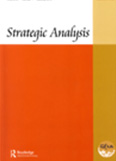Diversion of the Brahmaputra: Myth or Reality?
Lower riparian countries must develop sound strategies to bring China to the negotiating table with a view to stopping it from further damming or diverting the waters of the Brahmaputra or any other river originating in Tibet and flowing into South Asia.
- Hari Bansh Jha
- August 09, 2011














